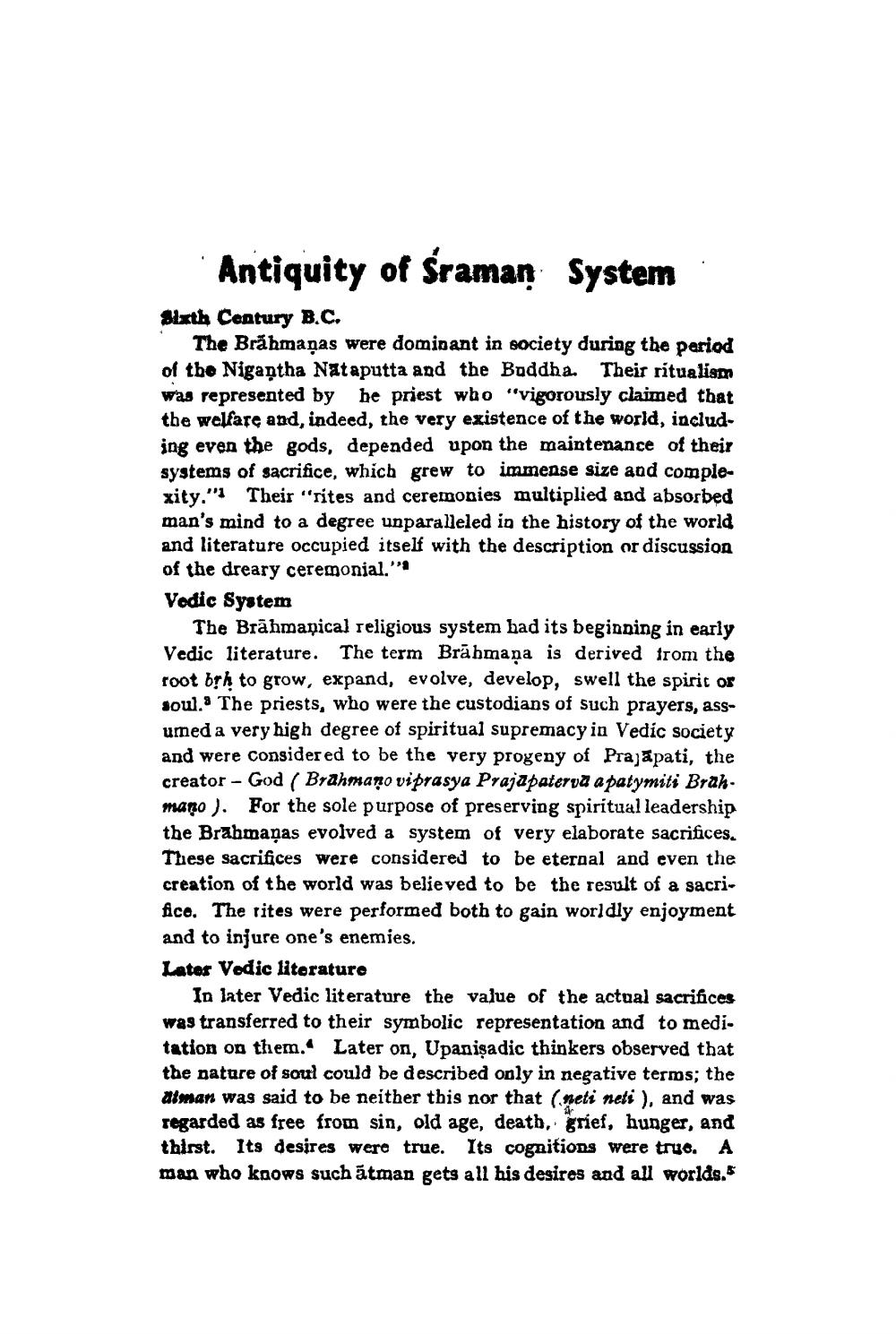________________
Antiquity of Sraman
System
Sixth Century B.C.
The Brāhmaṇas were dominant in society during the period of the Nigantha Nataputta and the Buddha. Their ritualism was represented by he priest who "vigorously claimed that the welfare and, indeed, the very existence of the world, including even the gods, depended upon the maintenance of their systems of sacrifice, which grew to immense size and complexity." Their "rites and ceremonies multiplied and absorbed man's mind to a degree unparalleled in the history of the world and literature occupied itself with the description or discussion of the dreary ceremonial." Vodic System
The Brāhmaṇical religious system had its beginning in early Vedic literature. The term Brāhmaṇa is derived from the root bh to grow, expand, evolve, develop, swell the spirit or soul. The priests, who were the custodians of such prayers, assumed a very high degree of spiritual supremacy in Vedic society and were considered to be the very progeny of Prajapati, the creator - God (Brahmano viprasya Prajapaterva a patymiti Brah. mano ). For the sole purpose of preserving spiritual leadership the Brahmaņas evolved a system of very elaborate sacrifices. These sacrifices were considered to be eternal and even the creation of the world was believed to be the result of a sacrifice. The rites were performed both to gain worldly enjoyment and to injure one's enemies. Later Vodic literature
In later Vedic literature the value of the actual sacrifices was transferred to their symbolic representation and to medi. tation on them. Later on, Upanişa dic thinkers observed that the nature of soul could be described only in negative terms; the atman was said to be neither this nor that (neti neti ), and was regarded as free from sin, old age, death, grief, hunger, and thirst. Its desires were true. Its cognitions were true. A man who kaows such ātman gets all his desires and all worlds.




